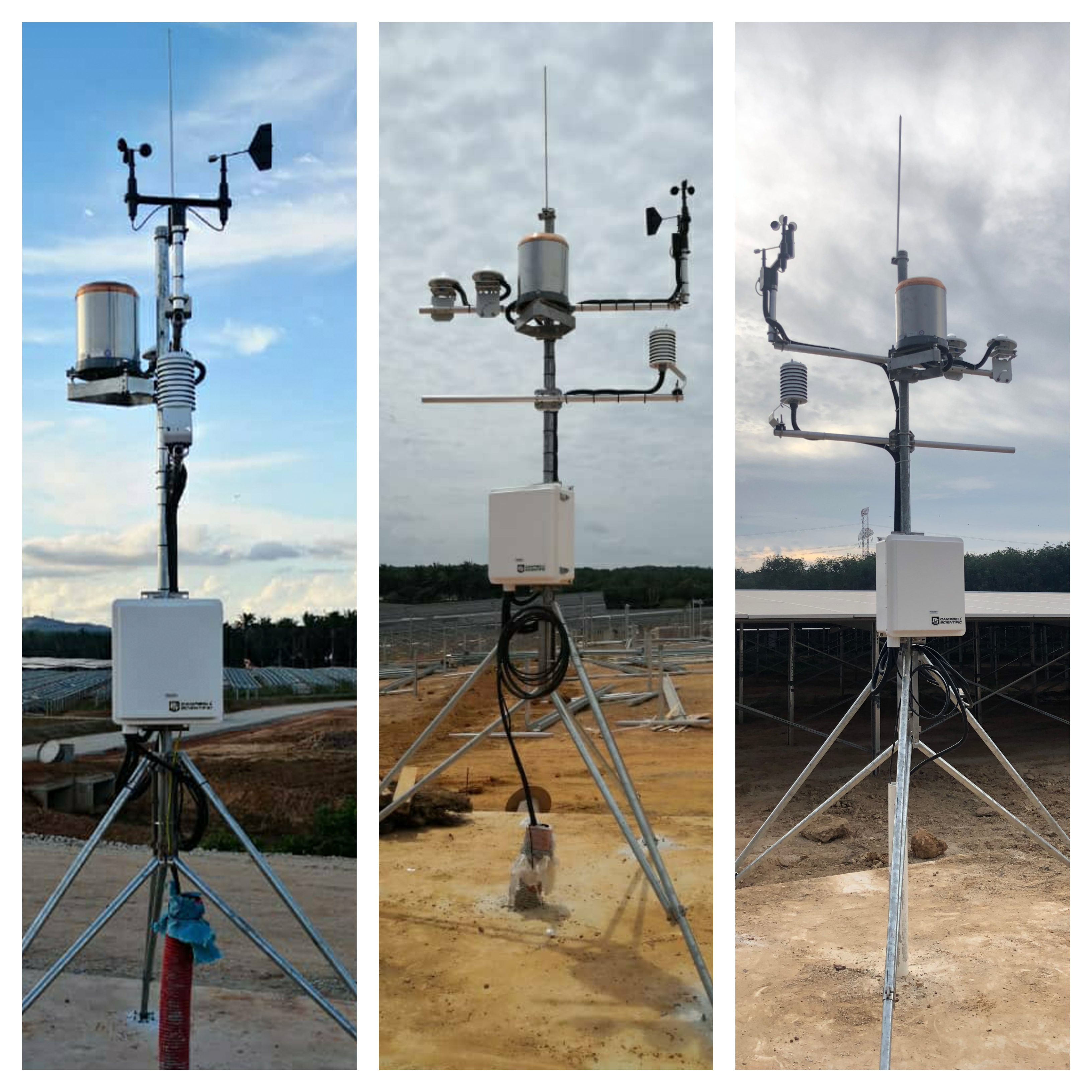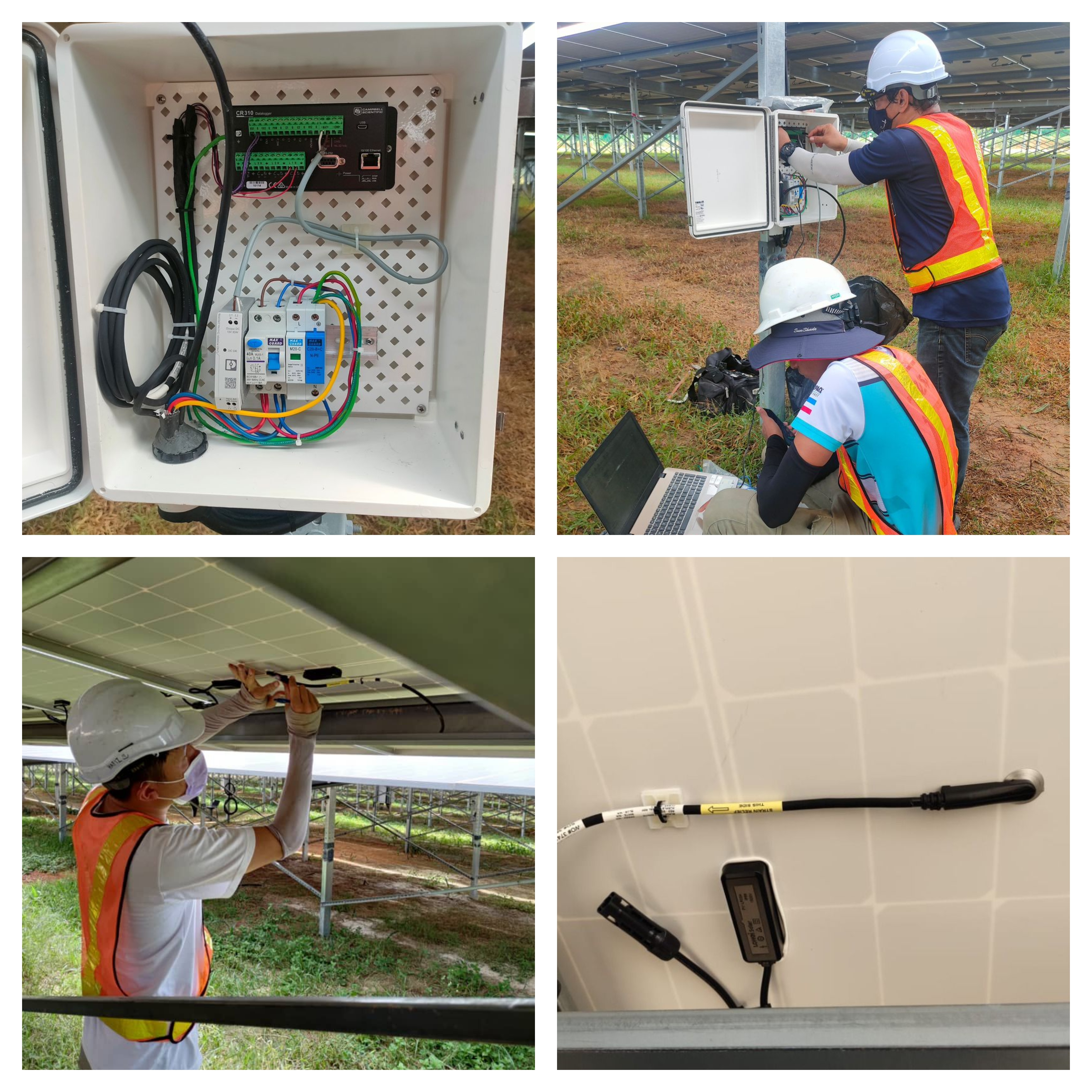
Campbell Scientific's Weather Monitoring Station
To fulfill the client's requirement of having at least one set of a weather station for every 10MW of plant size at appropriate locations suitably distributed within the solar photovoltaic arrays area of the facility. Surechem supplied and installed 11 sets of weather stations consisting of Campbell Scientific CR310 Datalogger connected to other Campbell Scientific meteorological sensors such as tipping bucket rain gauge, wind speed & direction sensor, relative humidity & temperature sensor, barometric pressure sensor, and most importantly solar radiation sensors also known as pyranometers. The system is linked directly to the solar power plant's SCADA system through an RJ45 connection for live data monitoring.

Campbell Scientific's Panel Temperature Station
In addition to the 11 sets of Weather Stations, Surechem also supplied and installed 6 sets of Panel Temperature Stations. Each station consists of Campbell Scientific CR310 Datalogger and two units of CS240 Pt-1000 Class A, Back-of-Module Temperature Sensor. The system is also linked directly to the solar power plant's SCADA system through an RJ45 connection for live data monitoring.

Importance of Weather Monitoring Stations in Solar Farm
Solar energy production is greatly influenced by local weather conditions. A proper understanding of these relationships is critical to ensuring that solar energy is a financially and environmentally sustainable renewable energy source. A weather station can be defined as a facility containing instruments and equipment used to observe atmospheric conditions to facilitate weather forecasting for the study of meteorology and climate.
A PV solar site's on-site weather station (MET) provides high-quality weather data that helps measure the amount of solar radiation reaching the surface of the PV modules. This helps analyze and measure what portion of solar radiation is converted to electricity in a particular module configuration. Operators can use real-time data to monitor power generation degradation that can impact energy performance and ROI. Solar irradiance measurements are useful in site selection for photovoltaic systems, calculation of system operating efficiency, and determination of potential improvements in plant configuration.
Contact us today to find out more!
